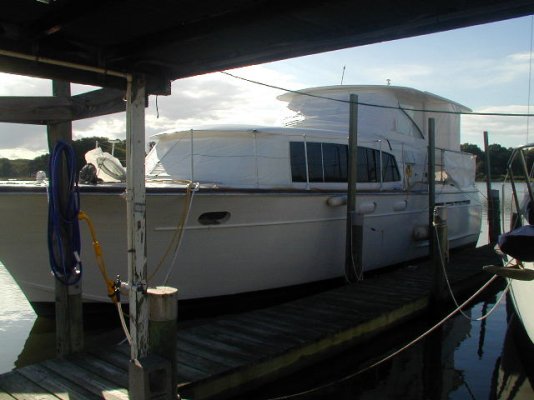Hello All-
I have a 42' 1956 Chris Craft Constellation. I have been noticing some kind of deterioration along the ribs in the engine room. Photo attached. What is causing this and how to prevent? The boat is kept in a covered slip in the water year round in Virginia. There is no fresh water penetration into the affected area. There is no other rot in the usual places, around windows or decks. The boat is generally in top condition.
I've owned wood boats in the past, so I am familiar with dry rot caused by fresh water. Usually, the entire wood piece is permeated with the rot, and an ice pick can be pushed all the way in. The rot in this case is different. It's only on the surface, and appears to be a kind of "shredding" or "fuzzing" of the outer surface of the wood. The layers below are solid. Therefore rot caused by water or condensation is not my first thought but I'm wondering if it might be caused by some kind of electrical condition - electrolysis, or stray DC current grounding out, or even neighboring boats putting out current into the water, etc. but I need an expert's advice. And it has occurred quickly - over the course of a winter. Any thoughts about this?
Many thanks
I have a 42' 1956 Chris Craft Constellation. I have been noticing some kind of deterioration along the ribs in the engine room. Photo attached. What is causing this and how to prevent? The boat is kept in a covered slip in the water year round in Virginia. There is no fresh water penetration into the affected area. There is no other rot in the usual places, around windows or decks. The boat is generally in top condition.
I've owned wood boats in the past, so I am familiar with dry rot caused by fresh water. Usually, the entire wood piece is permeated with the rot, and an ice pick can be pushed all the way in. The rot in this case is different. It's only on the surface, and appears to be a kind of "shredding" or "fuzzing" of the outer surface of the wood. The layers below are solid. Therefore rot caused by water or condensation is not my first thought but I'm wondering if it might be caused by some kind of electrical condition - electrolysis, or stray DC current grounding out, or even neighboring boats putting out current into the water, etc. but I need an expert's advice. And it has occurred quickly - over the course of a winter. Any thoughts about this?
Many thanks




